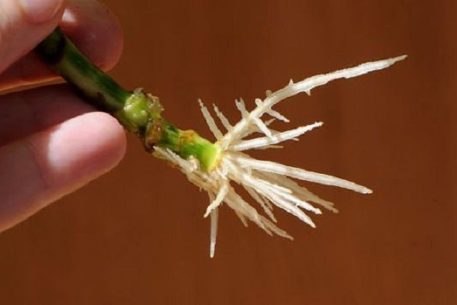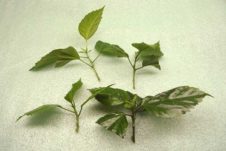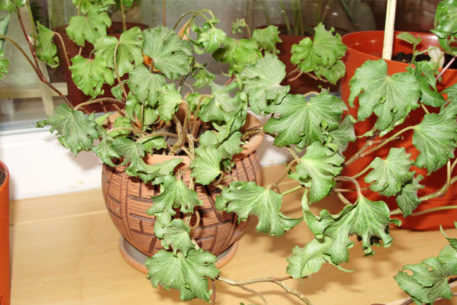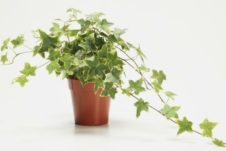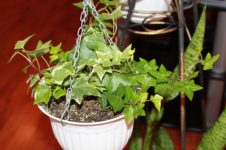Among herbal designers and flower growers, indoor ivy is very popular because of the special decorativeness and undemanding care. A flower with creeping shoots and spectacular deltoid leaf plates harmoniously looks in the interior of a room for any purpose.
Material Content:
Species, varieties and description

In the wild, an evergreen shrub from the Araliaceae family is represented by 15 species that have a wide habitat. As a pot culture, as a rule, ordinary ivy and its forms, which number more than 100, are grown.
Indoor flower with a climbing stalk and aerial roots, with the help of which it clings to a support, does not bloom in an apartment. Florists are attracted to decorative leathery leaves with a waxy coating, which can be either plain or variegated.
- Among the most popular varieties are Eva with yellow leaves, dwarf Kholibra and variegated Jubilee.
- Sometimes another type is used for vertical gardening - Colchis ivy. This is a climbing plant with graceful shoots, which are covered with glossy whole, sometimes three-lobed, leaf plates of swamp color.
- Wax ivy in indoor floriculture is represented by varieties such as Dentata Variegata with variegated oval-shaped foliage, Sulfur Heart with large-sized wrapped leaf plates and Arborescens.
Plant propagation methods
Indoor species of ivy in the conditions of the apartment are propagated by vegetative receptions.
Cuttings
For the procedure, apical cuttings 10 cm long with aerial roots are prepared. After cutting, the planting material is buried in a soil mixture of sand and sheet soil, where it is contained under a film in a warm room. During the rooting process, constant soil moisture is maintained. When the cuttings take root, they are seated in separate flowerpots of several pieces.
Shoots
There is a method that allows you to get two or more plants from one shoot at once. For this:
- The shoot is cut off with 8 leaf blades.
- An incision is made along the entire length by which the shoot is laid on the sand, after which it is pressed to a depth of 15 - 20 mm.
- After rooting, the shoot is divided into parts with roots and one leaf, which several pieces are planted in small containers with a fertile soil mixture.
Layering
A procedure similar to the previous one. The main differences - layering is stapled to the ground with brackets and does not separate from the mother plant to root.
Growing and caring for ivy at home

Even an inexperienced grower can grow an indoor ivy flower, subject to simple care rules that do not take much time.
Read also:croton: home care
Soil and pot requirement
For an exotic flower, a small pot with large drainage holes is selected. The plant prefers the soil loose and fertile with a neutral or slightly acid reaction. The optimal composition of the substrate includes sheet, sod, humus soil, peat and sand in equal proportions.
Microclimate, proper lighting
Climbing plants from the subtropical climate love moderate heat and moisture.
- During the active growing season, a comfortable temperature regime is considered to be 22 - 24 ° C. In winter, the temperature can drop, but not below the maximum permissible value of 13 ° C.
- To create conditions that are close to natural, the flower should be sprayed with water for the whole year and bathed in a warm shower.
- Ivy, or heder, refers to shade-tolerant plants and can grow even in the back of the room. However, the more diffused light the plant receives, the more spectacular it will look. Therefore, when choosing a place that you should decide before acquiring a flower that does not like moving, preference should be given to well-lit areas.
Important! Variegated forms when placed in the shade will lose their color.
How to water indoor ivy
Curly flower with decorative foliage is an ideal plant for people who are often absent at home. Ivy is able to withstand soil drought, but do not use this plant quality too often. The optimal irrigation regime involves maintaining in the summer period of constantly moist soil without stagnation of moisture in the root system. In winter, watering is reduced: before the next portion of water, the earthen lump should slightly dry.
Fertilizing and fertilizers
In the spring-summer period, during which intensive vegetation of the pot culture falls, ivy is fed every two weeks. For top dressing, special liquid fertilizers are used for decorative and deciduous plants.
Caution! An overabundance of macro- and micronutrients in an earthen coma can damage the decorative qualities of a culture, making its leaves too large.
Ivy transplant
You can transplant a plant according to the same rule as other indoor flowers: young specimens - every spring, adults - with an interval of 2 years. But you should know that an indicator of the need for the procedure is the appearance of ivy roots in the drainage holes.
The transplant is carried out as follows:
- A new pot is selected 2 cm wider than the old.
- Expanded clay or gravel is placed at the bottom of the tank to create a drainage layer.
- A flower with an earthen lump is being transferred for drainage.
- A new substrate is poured into the pot so that there is a small gap for irrigation water between the wall and the earthen lump.
- The flower is watered, sprayed and returned to a permanent place.
Plant diseases and pests
The ivy houseplant has excellent immunity to diseases, the occurrence of which is mostly non-infectious in nature:
- Due to prolonged soil drought, leaf fall is observed.
- Due to the excessively low level of moisture, baldness of the shoots and fading of the leaves occur.
- Lack of lighting leads to the loss of variegated forms of a characteristic color.
Failure to follow the simple rules for keeping the plant at home can also cause pests such as aphids, scabies, and spider mites. In order to prevent the flower from settling, it is necessary to maintain high humidity in the indoor premises and periodically “bathe” the plant.
If insects have already attacked the culture, then an insecticidal preparation should be treated immediately according to the instructions on the package. In the absence of result, the treatment is repeated after 3 to 5 days.
Myths related to ivy
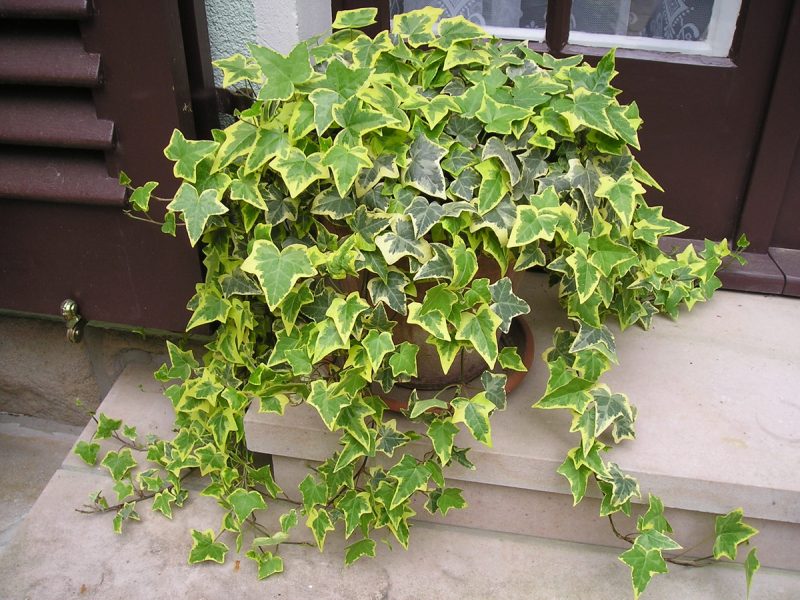
Stories about ivy were written back in the days of the Ancient world, when:
- among the Greeks, ivy was a symbol of fun;
- among the ancient Romans, the plant symbolized fidelity, love, and marriage;
- The peoples of the East believed that the flower nourishes the owner of vital energy.
These days, superstition with a negative color has appeared, claiming that ivy is an energy vampire and a husband who attracts loneliness.
So, indoor ivy is a spectacular ornamental plant, which is widely used for vertical gardening of a room interior and requires minimal maintenance.


